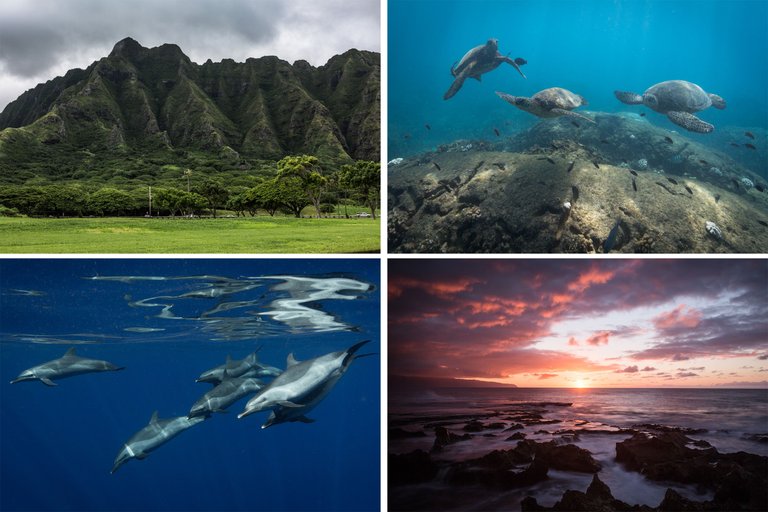
The title of our film, The Map to Paradise, was born from a quote by Frank Talbot, the ex-director of the Australian Museum and founder of the One Tree Island Research Station on the Great Barrier Reef. Frank had an incredible career in science and had lived an adventurous life full of meaning. He was the first person we interviewed for this project, and it was his research interview which set us on the path which we find ourselves in today.
"Man grew up in a paradise, and we don't want to screw that up totally," said Frank.
His words are very true. We grew up on a planet full of life, fresh air, water, with an estimated 8.7 million species on the land and in the sea (according to Science Daily)
Danielle really liked this quote about paradise, so after we returned home and Danielle listened to his interview again, she immediately decided this was it. This quote was the whole point of this documentary, of the journey that we were trying to pursue - we were trying to find 'paradise.'
The whole idea of rezoning the ocean was all about redesigning our idea of how we map the world, and maps are often used to find treasure. The idea of a map connotes a sense of adventure, a journey to somewhere.
'The Map to Paradise' just made sense as a title.

For our next interview, Frank suggested that we get in contact with another man by the name of Michael Sutton, who was an environmental leader in California, and had numerous conservation successes to his name. However, he was on the other side of the world, so we would need to try work out a cost effective way to get over there.
Coincidentally, we received some great news around this time.
Two of our short films on marine protected areas had been accepted into the UNAFF 2015 Film Festival in Palo Alto and San Francisco, California, later that year, and the festival would pay expenses for one of us to attend the event.
The timing would work out perfectly, since we would be able to meet Mike whilst we were over there.
So, we started looking for flights and came across one that would pass through Hawaii on the way that was cheaper than going directly.
This meant that we could also maximise our time away to film larger megafauna in beautiful clear water that would help make the film more impactful.
Hawaii is a gorgeous chain of volcanic islands in the middle of the Pacific full of mountainous green peaks and off its shores the water is full of large marine creatures like turtles, dolphins, sharks, manta rays and whales.
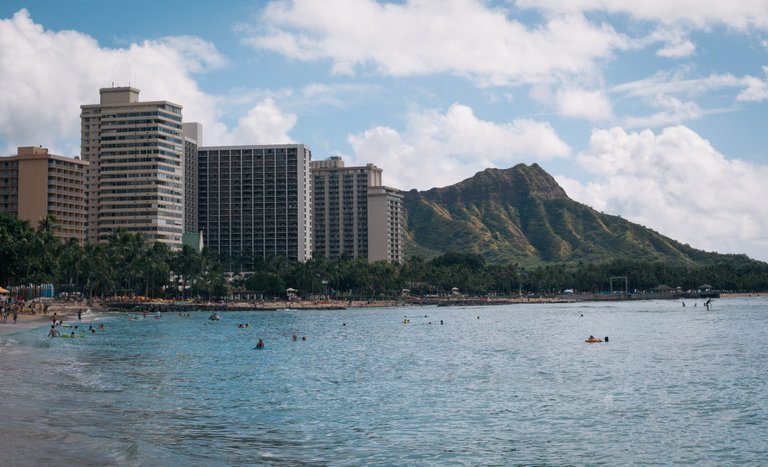
Our goal was to get in the water with dolphins and hopefully get some underwater footage of them.
We decided to go out with Wildside Specialty Tours on the west side of Oahu. Their tours were less crowded and their employed scientists, so we thought they were a good fit for us.
We set off way offshore in search of pods of dolphins.
It wasn’t long before we came across a couple of dolphins, followed by more and then all of a sudden, they were everywhere.
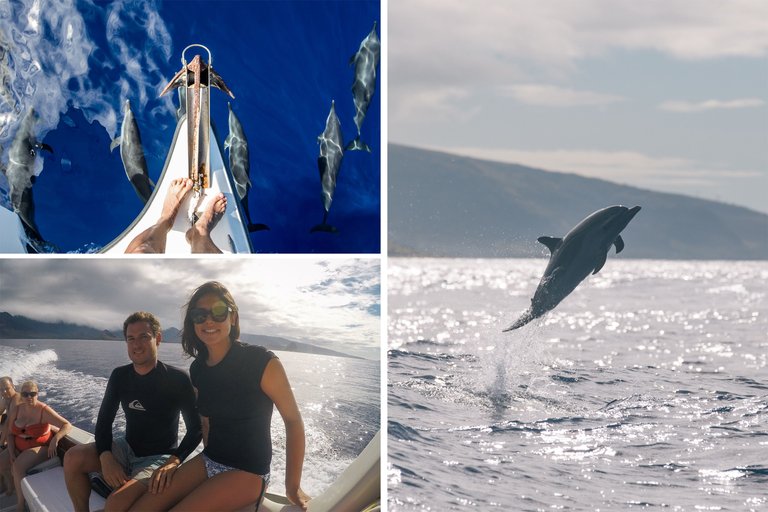
The captain decided that the pod was suitable to attempt a snorkel with them, but once we got in they disappeared.
It wasn’t until the third attempt that the dolphins really engaged us, swimming amongst us for a few seconds before disappearing off into the blue. It was a beautiful experience.
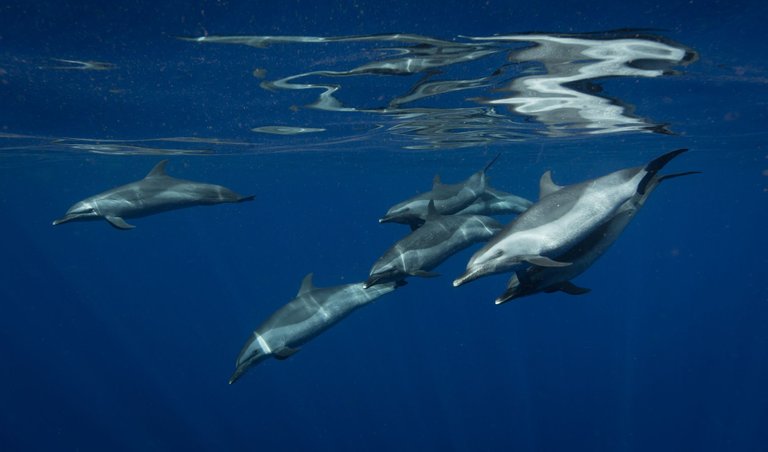
Then, the captain decided to head back inshore to a little patch of reef, known as a cleaning station, where turtles gather to be cleaned by small fish.
We jumped in and swam across to the cleaning station where we came across a few turtles being cleaned.
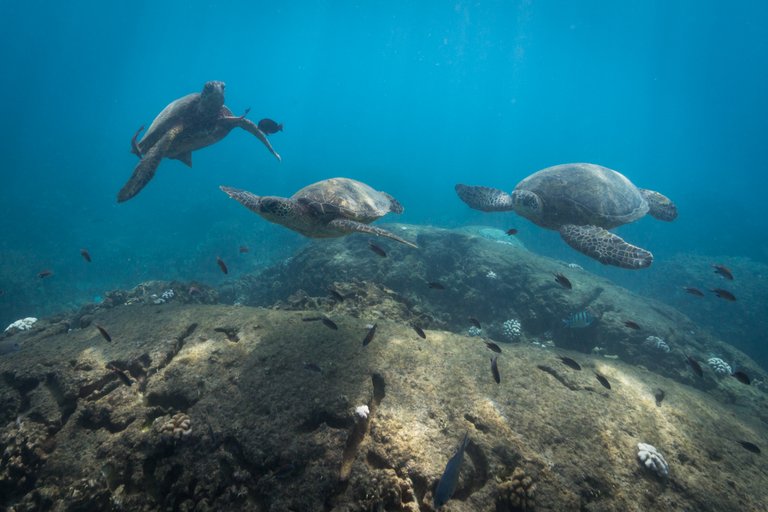
We had a great time interacting with the turtles and watching them hang out at the cleaning station before getting back onto the boat and heading back to shore.
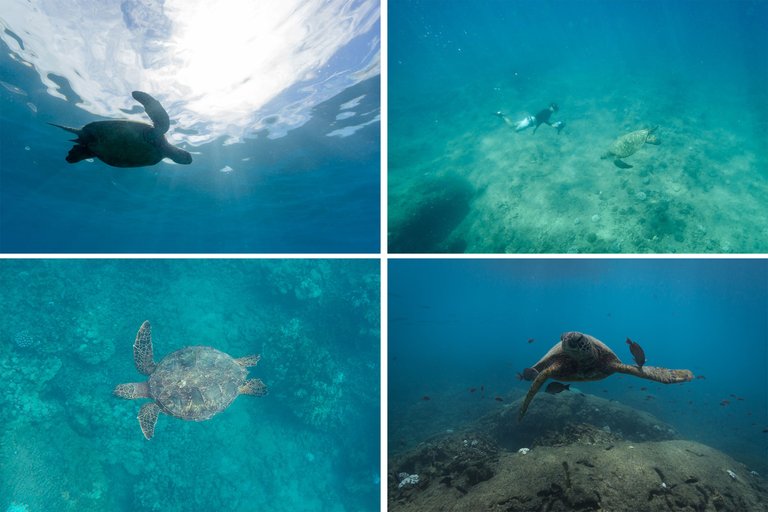
The next morning we had to be on the north shore for our trip out with One Ocean to swim with the sharks on Oahu's North Shore.
I’d been following these guys on Instagram for a while and their shark interaction trips looked awesome, so I was pretty excited about getting out there.
Danielle had no idea what she’d signed up to and on the briefing out to the site, she learned that there was a good chance that we may see one of their resident tiger sharks. This put her on edge a bit and when we got to the site and learnt that the visibility wasn't great, she questioned getting in.
I hopped in first and was met by a sea of sandbar sharks, just chilling in the current below - a dream encounter of mine (as I am shark obsessed)!

The visibility wasn't great and as a result we had to stay pretty close to the boat just in case the tiger shark decided to show up unannounced.
In the end, Danielle didn't take much convincing to get her into the water to experience all the sharks and she enjoyed it once she was in.
A 2.5m Galapagos shark came past at one point, but no sign of the tiger sharks, (which made Danielle happy).
It was another great trip that we would leave with some nice footage for the film.

We still had half a day to kill before jumping on our flight to San Francisco, so he thought we should go visit the World Famous marine sanctuary Hanauma Bay.
Upon arrival, we were overwhelmed by the number of people parking their cars and heading down to the preserve. It was an overwhelming sight as we just weren't used to such big crowds.
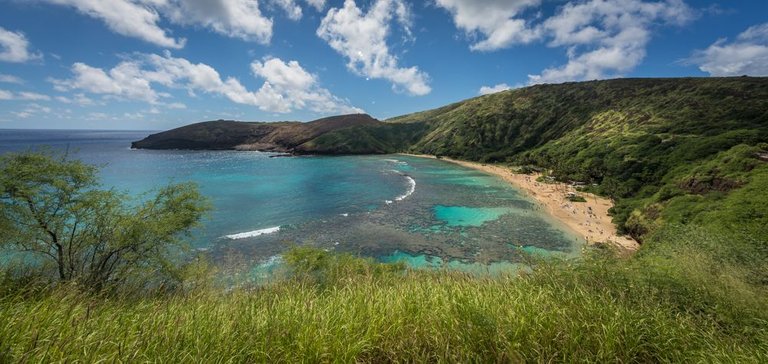
Everyone was required to pay a fee to get into the park area and they were required to watch a short video about preservation of the area.
The park rangers certainly had the education element working well. However, upon entering the water, our hearts sank. The inshore reef was trashed. There were a lot of fish, but the corals were long gone.
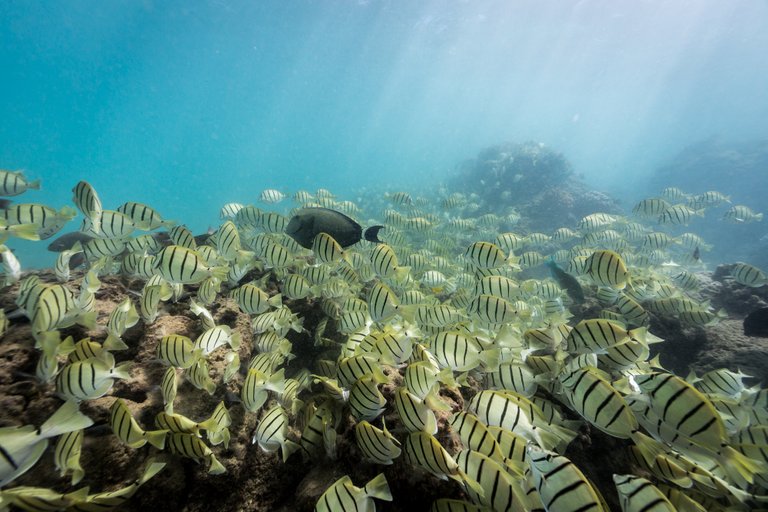
Every now and then then you would come across a coral that had survived the 3,000 daily visitors that trample the reef flat in search of the perfect selfie.
For us, it seemed ridiculous that only one fully protected marine sanctuary existed on Oahu.
Here we had a bay with some 'okay' snorkelling generating thousands of dollars a day. Surely, it would make sense to protect a few more locations on the island and thus take the pressure off the world famous bay?
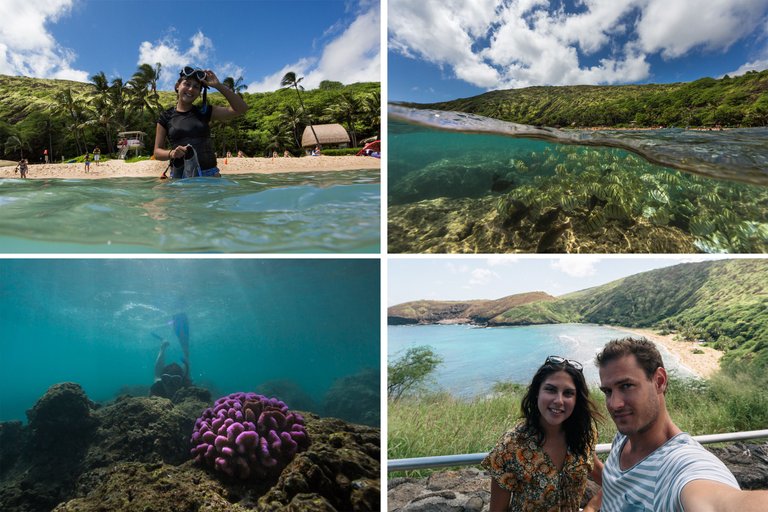
The corals of Hanauma Bay have unfortunately been loved to death.
Sadly, it is becoming hard to find pristine places that haven’t been impacted on by overexploitation and tourism.
Hanauma Bay is a good example to show to people why we need more protected areas. We need more on the land and in the sea to reduce the tourism impacts on these places; wild places that we all love to visit whilst on holidays. The more wild places, the more exciting places to explore and to enjoy.
Overall, the trip was a great success.
The footage we filmed would come in handy for the teaser to our film and had we discovered first-hand some of the issues facing well managed areas that are already protected.
Next stop California, to be continued...
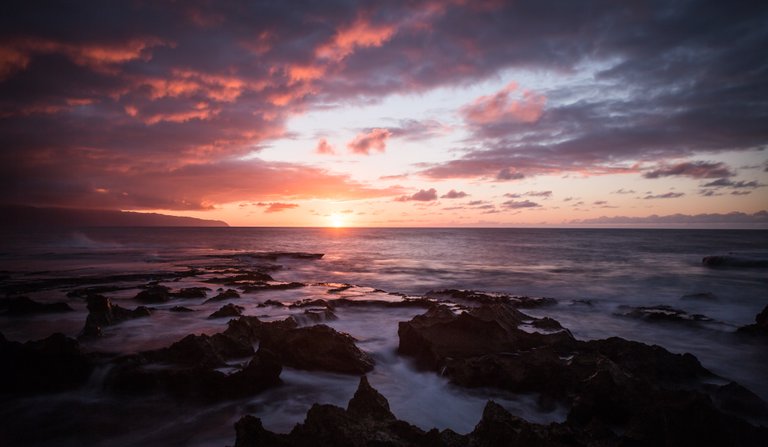
Amazing💖
Thanks @gorafarid!
Great work! Sometimes we forget the beauty all around us!
Totally agree @ecosong
Wow! You are making a wonderful work!
Glad you like it @jnmarteau, thanks for reading!
Thanks again @bluebottlefilms for making this huge work and sharing it! :)
I've been to a couple of the Hawaiian Islands and thought that Hanauma Bay snorkelling was pretty average compared to some of the other places.
I agree @choogirl, there is some great snorkelling in Hawaii particularly on the other islands, Hanauma Bay has had issues with overuse since the 1980's. I guess it can be used as a good lesson for some of Hawaii's other protected coral reefs.
@choogirl is this content something I can add to @steemitworldmap, or is it to specific to our film?
Yes definitely, I would love to see you posts on the map. Go to http://steemitworldmap.com, search for your location, click on code (down the bottom) and add a short description. It will then generate the code you need to copy and paste into your post (not the comments) to have it show up on steemit worldmap. Your post is now on the map. There’s also a FAQ section if you need it.
Let me know if you want to join Team Australia too. I think I've asked you this before? Details on how to that are here: https://steemit.com/teamaustralia/@choogirl/team-australia-new-recruits-update-17-01-18-and-our-first-team-australia-celebrity
More amazing stories from your fantastic project @bluebottlefilms. I really like this behind the scenes post. It gives me a glimpse into all the work and travel that goes up making such an amazing documentary. It chips at my soul to hear and see what has happened at Hanauma Bay, it really isn't that hard to snorkel effectively over coral reefs without clambering all over them. The conservation authorities should have implemented small guided groups for the public once it became so popular. Maybe it wouldn't have been that effective but it probably could have mitigated the damage. Anyway, keep up the good work. Thanks for sharing another snap shot of your journey :-)
No worries @raj808, yeah it is sad to see such beautiful places degrade over time. Hanauma Bay was probably a little unlucky, as a lot of the impact was felt before we knew about how fragile coral reefs were. They do close the bay on Tuesdays to give it a break which is quite impressive and the fish life there can be pretty amazing, so I guess all is not lost. It would just be a shame to lose other beautiful places due to mismanagement. Unfortunately, it is so much easier to restore nature than to regenerate it. Thanks for reading!
@originalworks
The @OriginalWorks bot has determined this post by @bluebottlefilms to be original material and upvoted it!
To call @OriginalWorks, simply reply to any post with @originalworks or !originalworks in your message!